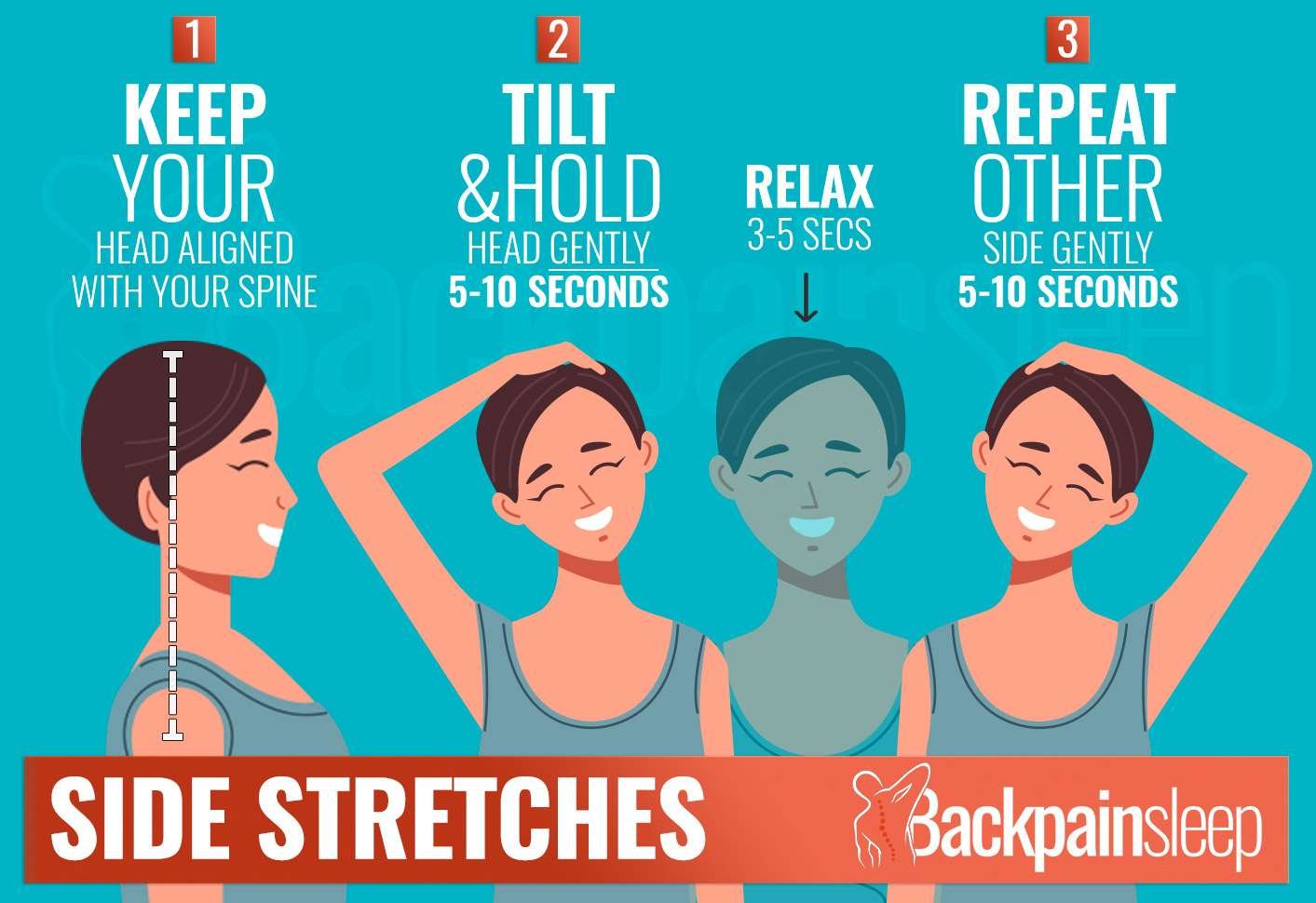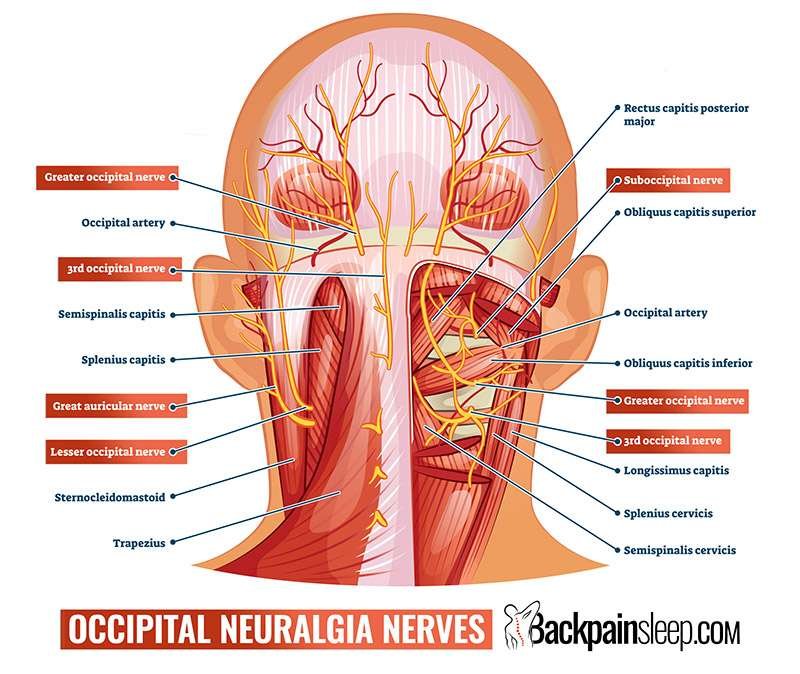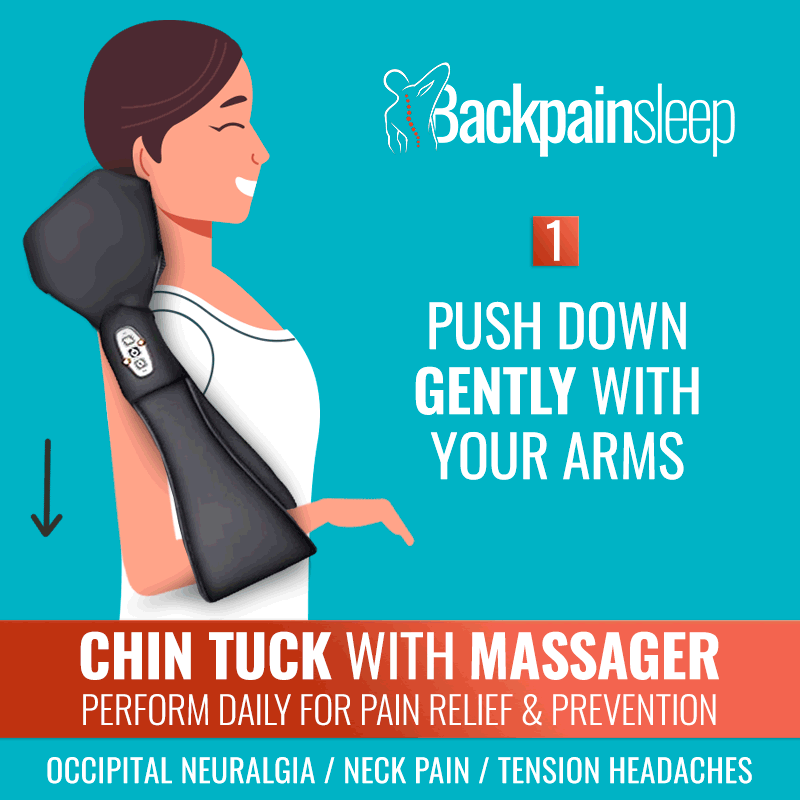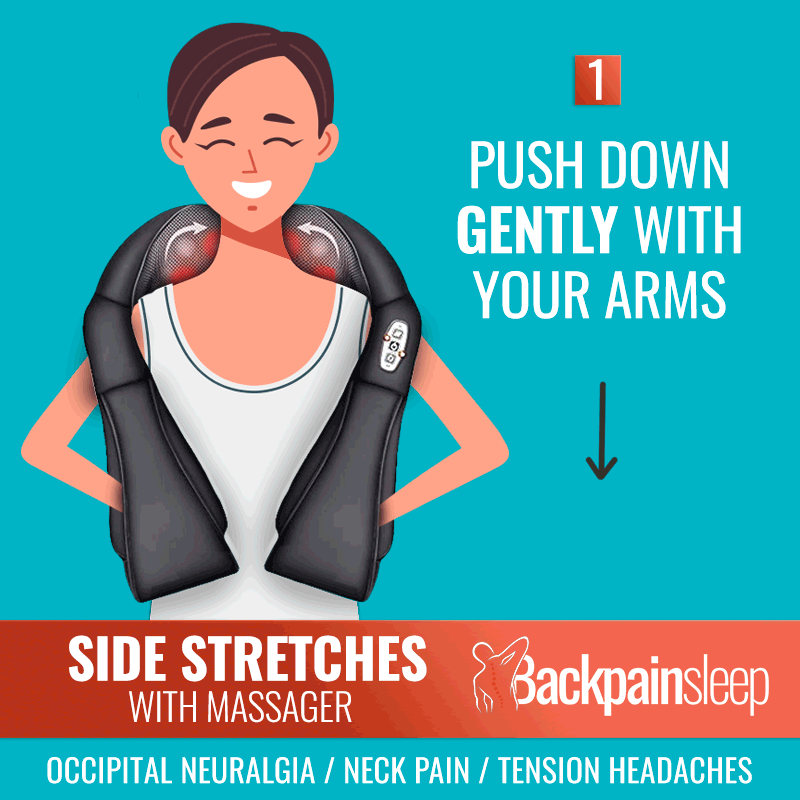
Occipital Neuralgia Overview
In this article, we’ll get straight to the point and show you the best exercises for occipital neuralgia that we use every day, and how we perform them. Occipital Neuralgia is a very painful nerve condition with a specific type of headache that causes piercing, throbbing, or electric-shock-like pain at the base of the skull, upper neck, back of the head, scalp, and often behind one eye. An inflamed, compressed, or injured occipital nerve will cause these classic symptoms, and it can be debilitating.
Occasionally, we become complacent and find our Occipital Neuralgia flare-ups will feed off a tension headache we haven’t paid attention to. Self-inflicted, preventable, and a painful reminder to always keep up with our best exercises for occipital neuralgia along with using the neck massager. We have suffered with this condition for decades and know first hand that consistent exercise is key.

The Best Exercises for Occipital Neuralgia
Which exercises should I perform? How long should I do them? How often should I do them? Researching exercises for occipital neuralgia can be overwhelming due to the saturation of information available online. There are so many variations and combinations that it can be difficult to know where to start.
Of the many exercises we have tried and tested for pain relief and prevention, it’s the simple stretches outlined below that continue to serve us well when performed daily. Living alongside this condition for many years has taught us one thing… keep it simple and do these every day to keep the pain away.
- Chin Tuck
- Neck Rotations
- Side Stretches
- Massager Stretches

GET A CHEAP MASSAGER
Here’s the top selling, cheap massagers on Amazon – save money.
No products found.
Exercise 1: The Chin Tuck
The chin tuck is one of the best exercises for occipital neuralgia that can be performed daily, sitting or standing. Get into the habit of taking a small time-out and perform this exercise regularly to relieve and prevent pain. If you want to feel a little deeper stretch at the base of the neck, apply gentle pressure to the chin with a finger. As with any exercise or stretch, if you feel any discomfort or pain. Stop.
Research shows that the chin tuck exercise can strengthen and relax your lower cervical extensors, deep cervical flexors, and other muscles in the neck, shoulder, and ear regions. We find the effectiveness of this simple stretch is multiplied when using the neck massager, which you can read about below. An added benefit is a significant reduction of tension headaches.
When we look at the spaghetti of muscles surrounding the nerves it’s clear to see why they need stretching and releasing when they’re squeezing occipital nerves. Perform this exercise several times a day as long as it’s comfortable and you’ll also improve your posture. Here are the simple steps to performing the chin tuck exercise.

- Sit or stand upright, keeping your head and spine straight.
- Exhale and pull your chin backward, applying gently pressure with fingertips if you wish.
- If applying pressure with fingertips, apply enough to create a double chin. Think Jabba the Hutt ;O)
- Don’t overstretch your muscles and STOP if you experience any discomfort or pain.
- Hold for 5 to 10 seconds and return to the original position.
- Multiply the effectiveness of this super stretch by combining with a neck massager.

Exercise 2: Neck Rotations
Side-to-side head or neck rotations are an excellent exercise to reduce painful sensations and tightness in the back of your neck and occipital muscles. Not only does this exercise reduce the intensity of pain, but it also increases your neck mobility. This is another key exercise that really delivers relief when used with the neck massager. Here’s how you can perform this simple exercise.

- Sit in a comfortable chair. Keep your head and neck aligned with your spine.
- Rotate your head slowly to the left. Make sure your head is straight.
- Stretch as much as you can to the left side without causing any strain or pain.
- Keep your eyes on the left shoulder and hold the stretch for at least 20 seconds. (10 seconds is the right time for beginners).
- Slowly bring your head to the original position.
- Now, rotate your head to the right side and look over your right shoulder for 20 seconds. Again, make sure you gently stretch your head as far as you can.
- Return to the normal position and continue the exercise 2-3 times if you want, but once is a good start.

Exercise 3: Side Stretches
Side stretches are one of the most tried and tested exercises for relieving tightness in the neck, trapezius, shoulders, and occipital muscles. Performed correctly and gently, this exercise will also improve neck mobility. We perform this exercise after using the massager and usually before bed as it leaves our necks feeling ultra-relaxed and ready to flop onto a good pillow.

- Sit up straight. Keep your head and neck aligned with your spine.
- Tuck your chin a little and tilt your head to the left.
- Stretch gently without causing strain or pain, using your hand is optional.
- Hold the stretch for 5-10 seconds.
- Slowly bring your head to the original position, rest a few seconds.
- Repeat for the right side.
- Pro Tip! A couple of chin tucks after this exercise feels great.




WHY YOU NEED A NECK MASSAGER
It’s no surprise that massage can dramatically increase the effectiveness of occipital neuralgia exercises, and with the aid of an inexpensive neck massager, you can take these basic stretches to another level. Stretching and exercising tight muscles compared to stretching massaged and relaxed muscles are night and day.
The neck massager we use has a pre-programmed runtime of 15 minutes so our daily routine consists of enjoying a deeply relaxing shiatsu massage for 10 minutes then performing our stretches which takes a few minutes, it’s as simple as that and it genuinely feels amazing at the end of a long day. It also preps your neck for a comfortable sleep, as long as you have a good pillow of course.
We consider this neck massager the most critical part of our daily pain relieving routine… these really, really work and you will likely kick yourself for not investing in one years ago, and their low cost make them a no-brainer.
We’re often asked to describe how it feels to someone who’s never used it. Well, our video clip below pretty much sums it up… It feels absolutely amazing…. but now imagine this with an extra 6 thumbs! Performing chin-tucks and neck rotations whilst using this at the same time can be nothing short of utter bliss when you’re in a lot of pain. Quickly tap play below to see how it feels.
Now you know what we mean. These brilliant, simple massagers are helping thousands of people who suffer from neck pain, tension headaches, and occipital neuralgia find relief when they need it. We’ve recently upgraded to a rechargeable massager and not being tethered to a power outlet is utterly liberating!
The massager above is our highest rated available on amazon and will serve you well for many years to come. We often give these as gifts and they go down a storm with people who’ve never used them. You don’t have to be in pain to have an amazing massage and they can be used by anyone and everyone.

VISUAL GUIDE: Massager Stretches
When using the neck massager we perform just 2 exercises for occipital neuralgia which offer us excellent relief.

ESSENTIAL Pillows – Checklist
There are a handful of items we consider essential to living with occipital neuralgia. The exercises above can make a big difference, the massager can make a big difference… but if the most critical item hasn’t been considered, a vicious, daily cycle of waking in pain, and trying to relieve it is likely. This is what happened to us.
It’s crucial to understand that providing your neck with the correct support on a nightly basis is going to give you the best shot at a good start every day. We use both solid and shredded memory foam pillows and switch between them regularly. Whether you’re a back or side sleeper, the pillows below are outstanding and perfect for resting your head and neck after your exercises for occipital neuralgia.
No products found.
No products found.
No products found.
Final Words
The exercises we’ve detailed above can be performed any time of day and anywhere. Adding a neck massager into the mix can make a huge difference, and we’d recommend investing in one because they’re so cheap. We would urge anyone to review their pillow if their neck is poorly supported at night, sleeping on a poor pillow WILL undo so much good work, and even make existing problems worse.
However, the most important takeaway from this post is that you get into the habit of performing a few basic exercises every day. They absolutely work for us, and we only have ourselves to blame if we don’t perform them and the pain returns.
Yes, there are times when occipital neuralgia defies logic and cripples us for no reason at all even when you think you’re doing everything right. It’s agony, soul-destroying and exhausting, but by performing a few basic stretches, daily, you’re doing your bit to make sure those moments are hopefully few and far between.
Good Luck ;O)
Sincerely,
BackPainSleep.

Recommended reading:
Why you need an adjustable pillow for neck pain.
Find out the best way to sleep with Occipital Neuralgia here
Discover why you should use massage every day for Occipital Neuralgia here
Read about the only pillow we use to dramatically reduce Occipital Neuralgia here
Stay safe.
Last prices update on 2026-01-03






